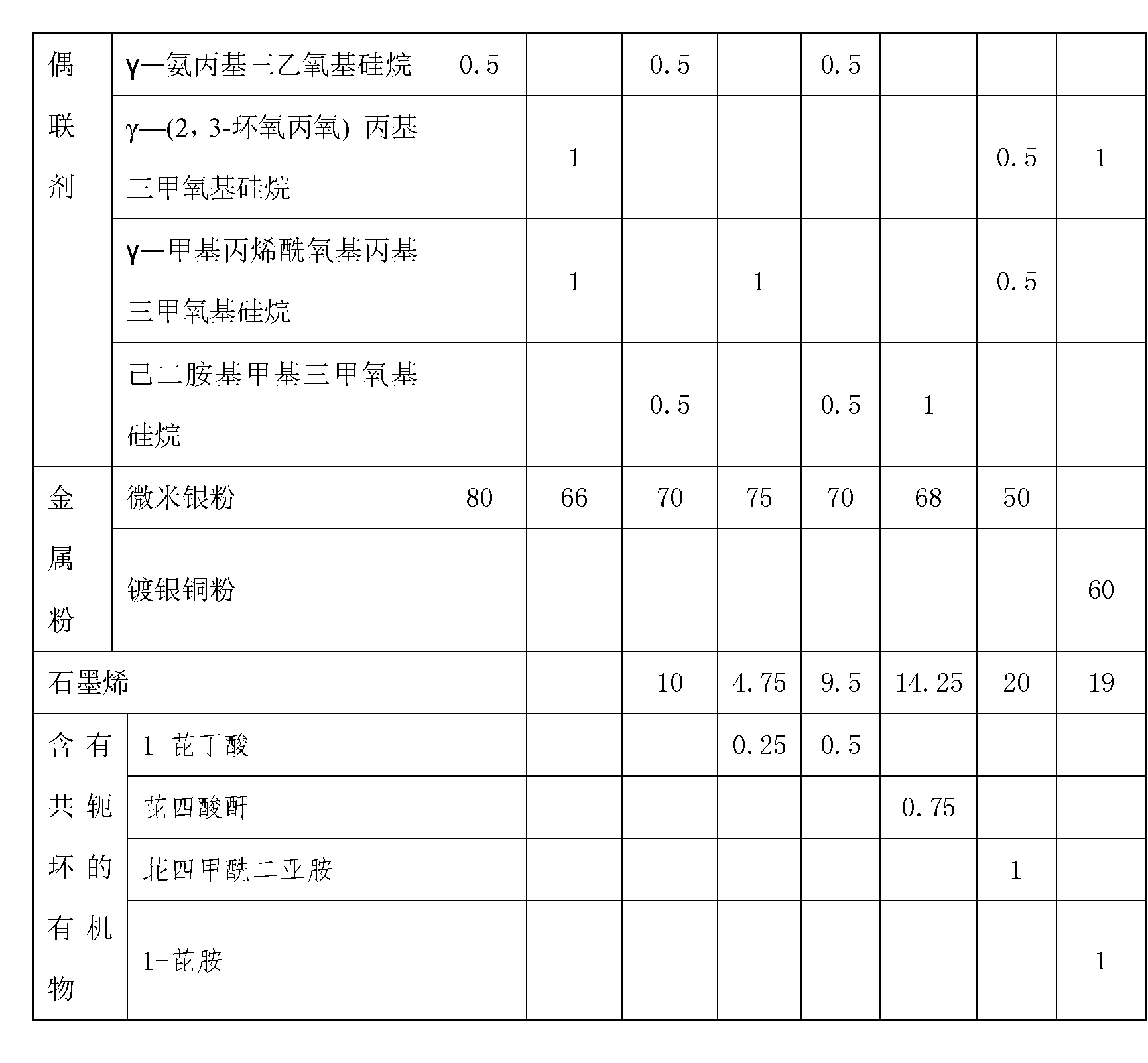Method for preparing high-heat-conductivity conductive adhesive containing graphene
A graphene and conductive adhesive technology, applied in conductive adhesives, adhesives, epoxy resin adhesives, etc., can solve the problems of insufficient electrical conductivity and thermal conductivity, and achieve the effect of improving thermal conductivity and satisfying lead-free reflow.
- Summary
- Abstract
- Description
- Claims
- Application Information
AI Technical Summary
Problems solved by technology
Method used
Image
Examples
Embodiment 1
[0028] At normal temperature, according to each component specified in Example 1 in Table 1, bisphenol A type epoxy resin neopentyl glycol glycidyl ether and 1,4-cyclohexanediol glycidyl ether were mixed for 10 minutes to uniform, then add 2-undecylimidazole and γ-aminopropyltriethoxysilane, mix at room temperature for 15 minutes to form a homogeneous mixture, and then grind with a three-roll machine, add flake silver powder, mix at room temperature at low speed for 60 The conductive adhesive can be prepared in a few minutes.
Embodiment 2
[0030] At room temperature, according to the components specified in Example 2 in Table 1, bisphenol A type, bisphenol F type epoxy resin and 1,4-butanediol glycidyl ether were mixed for 10 minutes until uniform, and then added 2-Ethyl-4-methylimidazole, 2-phenyl-4-methylimidazole, γ-(2,3-epoxypropoxy)propyltrimethoxysilane and γ-methacryloxypropyl Base trimethoxysilane, mix at room temperature for 10 minutes to form a homogeneous mixture, and then grind with a three-roller machine, add flake silver powder, and mix at room temperature for 60 minutes at a low speed to obtain a conductive adhesive.
Embodiment 3
[0032] Formulate each component according to embodiment 3 in table 1, bisphenol A type, bisphenol F type epoxy resin and 1,4-cyclohexanediol glycidyl ether, polyethylene glycol diglycidyl ether were mixed for 20 minutes until uniform, then add graphene, micron silver powder, γ-aminopropyltriethoxysilane, and hexamethylenediaminomethyltrimethoxysilane into the epoxy resin mixture, mix at room temperature for 10 minutes to form a homogeneous mixture, and then After three-roll milling, 1-cyanoethyl-2-ethyl-4-methylimidazole and 2-phenyl-4-methylimidazole were added at 40 o C under vacuum for 60 minutes to prepare the conductive adhesive of the present invention.
PUM
 Login to View More
Login to View More Abstract
Description
Claims
Application Information
 Login to View More
Login to View More - R&D
- Intellectual Property
- Life Sciences
- Materials
- Tech Scout
- Unparalleled Data Quality
- Higher Quality Content
- 60% Fewer Hallucinations
Browse by: Latest US Patents, China's latest patents, Technical Efficacy Thesaurus, Application Domain, Technology Topic, Popular Technical Reports.
© 2025 PatSnap. All rights reserved.Legal|Privacy policy|Modern Slavery Act Transparency Statement|Sitemap|About US| Contact US: help@patsnap.com



